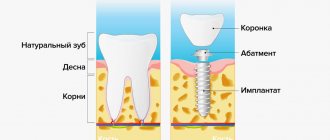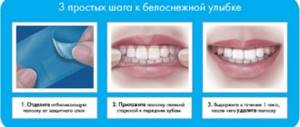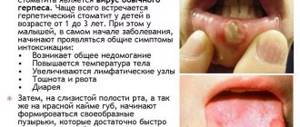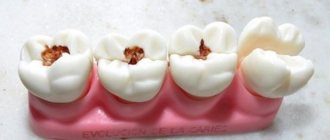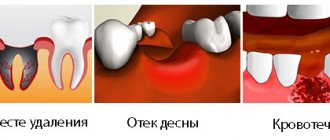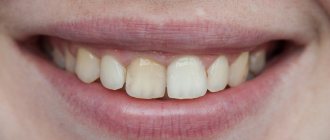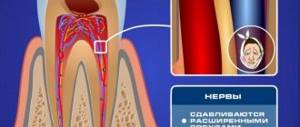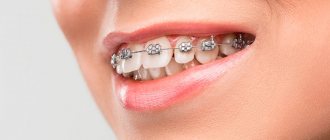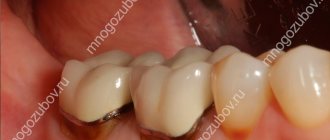Chief editor of the site:
Snitkovsky Arkady Alexandrovich
Chief physician of the professorial dentistry “22 Century”, dentist, orthopedic dentist
Author of the article:
Scientific team of dentistry “22 Century”
Dentists, candidates and doctors of medical sciences, professors
Dental treatment under general anesthesia
Panic fear, a strong gag reflex, allergic reactions to anesthetics and many other conditions are indications for the use of general anesthesia during dental procedures. The patient’s condition after such an intervention is somewhat different from his normal state of health, and this article is devoted to how to behave for the first time after treatment under anesthesia or drug sedation in dentistry .
Necessary risks
It is impossible to carry out a complex operation without the use of general anesthesia, since without it the patient will not withstand the painful shock. Recovery from anesthesia may be required if its use has caused a negative effect on the body:
- Depression of consciousness and respiratory functions
- Blood pressure surges
- Arrhythmias
- Chills
- Nausea
The state after anesthesia is especially unstable after neurosurgical operations Neurosurgical operations
Emergency or planned surgical interventions in the functioning of the brain and spinal cord are carried out with the aim of correcting or eliminating a pathological condition.
After operation
When to get up after surgery? The general rule is as early as possible! Don't linger! But of course, with the doctor's permission. Lying for a long time is fraught with the development of hypostatic pneumonia, acute thrombosis of the veins of the lower extremities, bedsores on the back, sacrum, and heels.
A case is described: a young patient, 23 years old, practically healthy, after a routine uncomplicated appendectomy, lay on his bed and did not want to get up (he was in pain, you see). On the third day I finally got up. Result: pulmonary embolism - instant death.
When can I return to normal work after anesthesia? After general anesthesia, after just two days, a person can perform normal work, work with complex mechanisms that require concentration, and drive a car! But the operating surgeons discharge the patient after 7-8 days, when the stitches are removed and the wound has healed. You can drink after anesthesia when your reflexes are restored and there is no nausea or vomiting.
We also recommend reading: Eating food
You can eat it the next day, the diet is gentle: you can’t eat spicy, salty, fried, canned food, sausages, or alcohol. The Pevzner diet is usually followed.
Pain relief without harm: how to recover from anesthesia?
The onset of a post-anesthesia state is much easier to prevent than to overcome. The drug “Semax 0.1%” is perfect for this purpose. Unique regulatory neuropeptide Neuropeptide
Or regulatory peptide - these are compounds of amino acids that regulate various functions in the body.
"Semax 0.1%" has proven itself to be effective both as a prophylactic dose before surgery and in the treatment of complications after anesthesia . The therapeutic effect of Semax 0.1% is to prevent dysfunctional disorders of the parts of the central nervous system that are most affected during general anesthesia.
Method for reducing the effect of anesthesia
Usually, even after an operation or a procedure requiring anesthesia, the painkiller continues to make itself felt: the lips remain numb, it is not possible to eat normally, the smile becomes distorted. Therefore, people are looking for a way to help the anesthetic stop working as quickly as possible.
In this case, dentists usually recommend applying warm compresses to the cheek. This will help dilate the blood vessels, which will ultimately increase the metabolic rate and remove the anesthetic from the body. However, this is contraindicated after tooth extraction or if inflammation remains. Thus, it is strictly forbidden to heat a tooth or cheek during gumboil. Therefore, it is highly recommended that you consult your dentist initially.
"Semax 0.1%" - a faithful friend of neurons
Recovery from anesthesia can be challenging if you don't plan ahead. Anesthesia can lead to hypoxia Hypoxia
Decreased oxygen content in the body or individual organs and tissues.
brain and, as a result, to disruption of metabolic processes. In this case, the patient “recovers” from anesthesia for a long time due to dysfunction of the nerve pathways caused by a lack of oxygen in the neurons. Neuron
A nerve cell consisting of a body and processes extending from it. Structural unit of the nervous system..
Violations affect:
- Restoration of higher nervous activity
- The functioning of the respiratory, cardiovascular, digestive and excretory systems
The likelihood of recovery increases if negative consequences after anesthesia are minimized in the first postoperative hours.
Semax is an effective remedy and a faithful assistant in the prevention of complications after anesthesia; it promotes the rapid restoration of the activity of functional brain systems that provide vital processes. With Semax, a person will be able to recover from anesthesia quickly and with the least risk.
Indications for general anesthesia
Under general anesthesia in dental practice, it is possible to eliminate almost all problems that arise in the oral cavity - from simple dental caries to complex maxillofacial operations. The patient seeks this type of help, most often, not because of pain, but because of severe fear or medical conditions that interfere with the doctor’s work (allergies, gag reflex, mental illness, etc.). More information about the types of anesthesiological support and how treatment is carried out with switched off consciousness can be found on our website. Here we will talk about the process of postoperative restoration of the patient’s activity , depending on the method of pain relief and the medications administered.
"Semax 0.1%" helps:
- Accelerate recovery from anesthesia and the state of postoperative disorientation;
- Restore normal metabolism Metabolism Metabolism
, which allows the body to maintain vital functions, maintain its structures and respond to environmental influences. and functioning of brain cells; - Prevent dysfunction of the respiratory, cardiovascular, digestive and excretory systems;
- Reduce the intensity of pain;
- Normalize the work of vegetative centers.
How anesthesia and anesthesia work: myths, fears, side effects
An alternative to spinal anesthesia can be epidural, when a local anesthetic is injected into the epidural space located in the spine through a special catheter. Depending on the type of operation (chest, abdominal cavity), the anesthesiologist determines the place of its introduction. In this case, the doctor can inject not only a local anesthetic into the epidural space, but also opioid painkillers that enhance the effect. Sometimes the epidural catheter may be left in place temporarily to provide pain relief as required by the patient (called an extended epidural).
More complex and serious interventions are always associated with lengthy preparation on the part of the anesthesiologist - installation of a central venous catheter, administration of infusion therapy, correction of blood coagulation parameters and other important parameters. It is also important to consider whether the operation is an emergency or a planned one.
Can you tell me more about the difference between spinal and epidural pain relief?
During spinal anesthesia, the drug is injected at the lumbar level into the subarachnoid space (into the cavity between the pia mater and the arachnoid mater of the spinal cord, filled with cerebrospinal fluid). Usually everything is limited to a couple of injections. In this way, the soft tissues above the injection site are anesthetized and the drug is directly administered under the dura mater. This anesthesia lasts from two to six hours and is technically easier to administer.
During epidural anesthesia, the drug is injected into the space between the dura mater of the spinal cord and the periosteum of the vertebrae, which contains connective tissue and venous plexuses. It is located closer to the skin compared to the spinal one. Anesthesia is given at any level of the spinal column. It is considered a technically more complex manipulation.
I've read that epidurals can cause paralysis.
This is a common fear, but anesthesiologists say that today it is practically impossible. Such a complication could arise after surgery due to improper care of the catheter, as a result of which the patient developed purulent epiduritis, which caused neurological symptoms with loss of function of the lower extremities. Or due to incorrect actions of the anesthesiologist, when puncture of the epidural space occurs at high levels (there is a risk of unintentional damage to the spinal cord). But in most cases, epidural anesthesia does not threaten anything other than a headache for several days after surgery.
Can everyone have anesthesia?
In life-threatening situations when a person needs surgery, doctors almost always use anesthesia. For example, if there is a victim of an accident on the couch who urgently needs surgery, the risk of having it performed with anesthesia for any health condition will be less than the risk of refusing it.
If a patient comes for a planned operation, then the anesthesiologist is obliged, after collecting an anamnesis, to select the appropriate type of anesthesia taking into account the patient’s health. Doctors are guided by the rule: the volume and risk of anesthesia should not exceed the risks on the part of the surgeon. The patient's age cannot be a contraindication. Specialists take into account all severe chronic diseases that complicate the state of health, and allergic reactions to anesthesia components.
Is there a difference between old and new drugs?
Yes there is: in their consumption, efficiency and safety of use. However, it is invisible to patients; To appreciate the difference, you have to be an anesthesiologist.
How to prepare for anesthesia and how to survive recovery from it?
Preparation depends directly on the type of anesthesia and surgical intervention. The doctor will tell you what and how best to do before the operation. Just build a trusting relationship with your treating doctors, it will be much calmer.
Each patient experiences recovery from anesthesia individually; not everyone feels bad, but many feel nausea and drowsiness, and muscle tremors. It all depends on the characteristics of the body and the drugs that were administered during the operation. After waking up, it is important to listen to your body and report any deviations to your doctors.
How long does it take for snus to disappear from the body?
Nicotine metabolism has a number of features. It is processed in the liver and kidneys, and after a few hours the half-life process occurs.
There are many factors that affect the rate at which nicotine is eliminated from the body, including:
- genetic predisposition;
- floor;
- age;
- eating behavior;
- ethnos.
An alkaloid that is a metabolite of nicotine, cotinine, remains in the human body for a longer period. Typically, cotinine can remain in the blood and organs for 10-15 hours and cause harm to them. In the last decade, mutations have emerged in people that increase resistance to addiction to cigarettes and snus.
Do you want to know about the cost of services?
8 call our specialist
How long does it take for snus to leave the body?
Is it possible to speed up the nicotine elimination process? Is nicotine visible in blood and urine tests? Within 2 hours after consumption, snus disappears from the blood, its concentration decreases by 50%. All substances that have not been processed into cotinine are excreted from the body through the gastrointestinal tract. Can nicotine be found in the blood? Of course they can, but this substance is not only retained in the circulatory system. It is distributed throughout the body, so traces of its consumption can be found in hair, saliva, nails, urine and other tissues within 24 hours. If a person is elderly, then his metabolism is slower, which makes it possible to detect accumulated nicotine for much longer. It is cotinine that helps determine in laboratory conditions whether a person has smoked cigarettes or used snus in the near future. It is important to know that the substance accumulates in the body even with passive smoking. Drug testing easily reveals snus in urine and blood tests.
What to do during a long recovery from anesthesia?
Surgical operations are planned. The person who is prescribed such an intervention receives enough time from the doctor for the most thorough preparation. The quality of this preparation largely determines how long and exactly how the patient will recover from anesthesia.
Most people who have been operated on under general anesthesia for a long time (from 3 hours) come to their senses within 1–3 days from the moment the effect of the anesthetic drugs wears off. Since the same anesthetics have different effects even on patients with similar histories, the likelihood of accurately determining the time is low, but rough estimates can be made.
While the patient is emerging from unconsciousness, he periodically regains consciousness. At these moments, the health worker asks the patient questions about his well-being, which are important to answer without hesitation. There is no need to endure pain, severe nausea or gag reflexes, since medicine has sufficient ways to correct these problems.
Before and after surgery, a person experiences an uncontrollable feeling of fear. However, you should not fight panic on your own. If there are obsessive experiences, a consultation with a psychologist is necessary even before the operation begins. If the patient’s relatives take part in his fate, they also need a conversation with a psychologist. The support of relatives, with proper support, will help the patient prepare for the upcoming surgical treatment and allow him to more easily endure the consequences of anesthesia.
(Ratings: 5 , average: 3.20 )
How to speed up the removal of snus from the body?
Everything is very simple, since the kidneys are most involved in the process of its elimination, it is necessary to take diuretics. Due to increased diuresis, the kidneys will begin to work more actively, filter the blood and remove toxins from the body faster. However, if you have low enzyme activity, then it is unlikely that you will be able to speed up the elimination of nicotine.
As you already understand, the elimination of snus depends on the rate of nicotine metabolism. In most cases, its concentration in the blood drops by half after 2 hours, but metabolic products can persist for up to 20 hours. To detect the presence of nicotine in the blood through testing, it is necessary to take a person’s hair, nails or urine. They will be able to show whether the addict has used cigarettes or snus in the near future.
How long should you keep snus?
Snus is a very common tobacco product today. Its main danger is that it can be bought in almost any store. Despite the 18+ label, it is used by younger children instead of cigarettes. It does not have the same smell since snus is chewing tobacco. No smoke, this attracts young people to the newfangled substance. There are no narcotic substances in snus, but there are many varieties that contain certain components harmful to the body. Due to the presence of nicotine, addiction to snus occurs quite quickly.
In crumbly form, snus is craft, but today it is most often consumed in packaged form. How long you can keep snus under your lip depends on its type and other factors, which we will consider below. On the packaging of tobacco products they write that you can hold the bag under your lip for 5-30 minutes. In reality it will run for 5-15 minutes. One sachet usually contains 1 gram of tobacco. However, the tingling of the gums goes away quite quickly, in contrast to the action of the substances found in snus. Soon a person gets used to this sensation, meanwhile, this is the effect of impregnating the package with alkali, which is necessary for the rapid absorption of harmful excipients and nicotine.
The composition that is written on the packaging is a lie in 99% of cases!
In fact, under the harmless components (flavors) there is alkali, phenols and alcohols. The list is far from complete. Manufacturers today work as hard as they can, without hesitation to put poison in their products.
Pros and cons of general anesthesia
Despite the fact that recovery from anesthesia is often unpleasant, this procedure is necessary. Anesthesia is widely used in many areas of medicine. During the operation, a person in a state of artificial sleep does not experience pain and lies motionless on the operating table, providing surgeons with ideal working conditions. The absence of many reflexes, relaxed muscles and peace of mind of the patient give specialists the opportunity to perform even the most complex manipulations effectively and efficiently.
General anesthesia has a number of advantages, which makes it indispensable during surgery. A person who is in a deeply inhibited state receives protection from painful shock, which would otherwise cause irreparable damage to his physical and mental health. The absence of a sense of panic and fear is beneficial for the patient himself and for those who treat him.
General anesthesia helps doctors to perform the operation calmly
Before the upcoming operation, you need to talk with the anesthesiologist, who should be told about all your fears.
In the recent past, highly toxic drugs have been used to promote medicated sleep. However, today in developed countries only anesthetics that are gentle on the body are used. The patient’s main task is not to hide information from the anesthesiologist that may be important when choosing an anesthetic drug. False shame about illnesses suffered in the recent past or about taking illegal drugs leads to sad consequences.
The disadvantages of coming out of artificial sleep include the fact that after anesthesia the following unpleasant sensations are possible:
- visual hallucinations;
- auditory hallucinations;
- nausea;
- vomit;
- stomach pain;
- headache;
- severe dry mouth;
- sore throat;
- feeling very tired.
In each case, there are ways to reduce the risk of developing unpleasant symptoms after anesthesia. To do this, it is important to honestly follow the recommendations of the anesthesiologist before surgery. All the doctor's questions must be answered truthfully. If these conditions are met and the drug combination is correctly selected, patients recover from anesthesia quickly and without complications.
Factors that determine the duration of a hangover
The duration of a hangover syndrome is not some kind of immutable constant, but is determined by a huge number of variable external and internal factors:
- what type of alcohol was taken during the binge;
- how many liters of alcohol were drunk;
- whether different types of alcoholic drinks were mixed;
- what kind of snack was it and in what quantities was it consumed;
- the age of the person suffering from a hangover after drinking;
- the general state of his health and the presence of chronic diseases;
- how susceptible the drinker is to alcohol in general;
- whether he has previously received treatment for alcohol dependence;
- volumes of physical activity and dietary habits in the first days after stopping binge drinking;
- Are any medications or folk remedies used to relieve hangover symptoms?
However, even if you collect all this information, its practical value will be small because the formula by which one could accurately calculate the predicted duration of a hangover simply does not exist.
How to shorten the hangover period
A detoxification drip is the only correct way to significantly reduce the duration of a hangover that occurs after a week of heavy drinking. Thanks to the neutralization and removal of toxic products of ethanol breakdown, the patient’s well-being very quickly improves, which makes it possible to reduce hangover suffering to 1-2 days.
In addition, the detoxification drip always includes drugs to correct disturbances in the functioning of those internal organs of the patient that are most affected by alcohol intoxication:
- diuretics - to accelerate the elimination of toxic metabolites;
- vascular drugs and cardioprotectors - to normalize the functioning of the cardiovascular system;
- hepatoprotectors - to restore liver function;
- nootropic drugs - to improve brain activity;
- vitamin complexes - for general improvement of well-being.
A narcologist can administer such a drip when he comes to the patient’s home on call to interrupt an alcohol binge, but if the patient has come out of the binge on his own and feels unwell, then you just need to go to a local drug treatment center, where he will undergo all the necessary detoxification and wellness procedures .
